2023: summarising the activities of Pałac Saski sp. z o.o.
Two years have passed since the project to rebuild the Saski Palace, the Brühl Palace and three townhouses on Królewska Street in Warsaw began, implemented on the basis of the Act of 11 August 2021 adopted by the Sejm and the Senate. After the uncovering of the relics of the cellar of the Saski Palace, the time has come for archaeological exploration of the Brühl Palace site. The first stage of research in this area resulted in nearly ten thousand objects. Last year was also a busy time for architects, who took part in an international competition to develop a concept for the reconstruction of the complex of palaces and townhouses, the winner of which was announced in October.
Who will design the reconstruction of the Saski Palace and Brühl Palace?
The appearance of the reconstructed western frontage of Piłsudski Square will, in accordance with the aforementioned Act, correspond to its external shape of 31 August 1939. Therefore, one of the first actions of the company responsible for the realisation of the investment, Pałac Saski sp. z o.o., was to carry out a thorough source search to collect all available historical descriptions, plans and photographs. The archives were later placed in the hands of specialists from the Sawawa urban planning and architectural studio, who produced a detailed architectural analysis of the historical buildings. Although the four thousand pages of archival material collected make it possible to accurately recreate the external appearance of the edifices, the reconstruction must meet the requirements of today’s building laws. In addition, their interiors need to be adapted to the needs of future users, including institutions carrying out cultural, educational and socially useful activities, the Chancellery of the Polish Senate and the Mazovian Voivodeship Office.
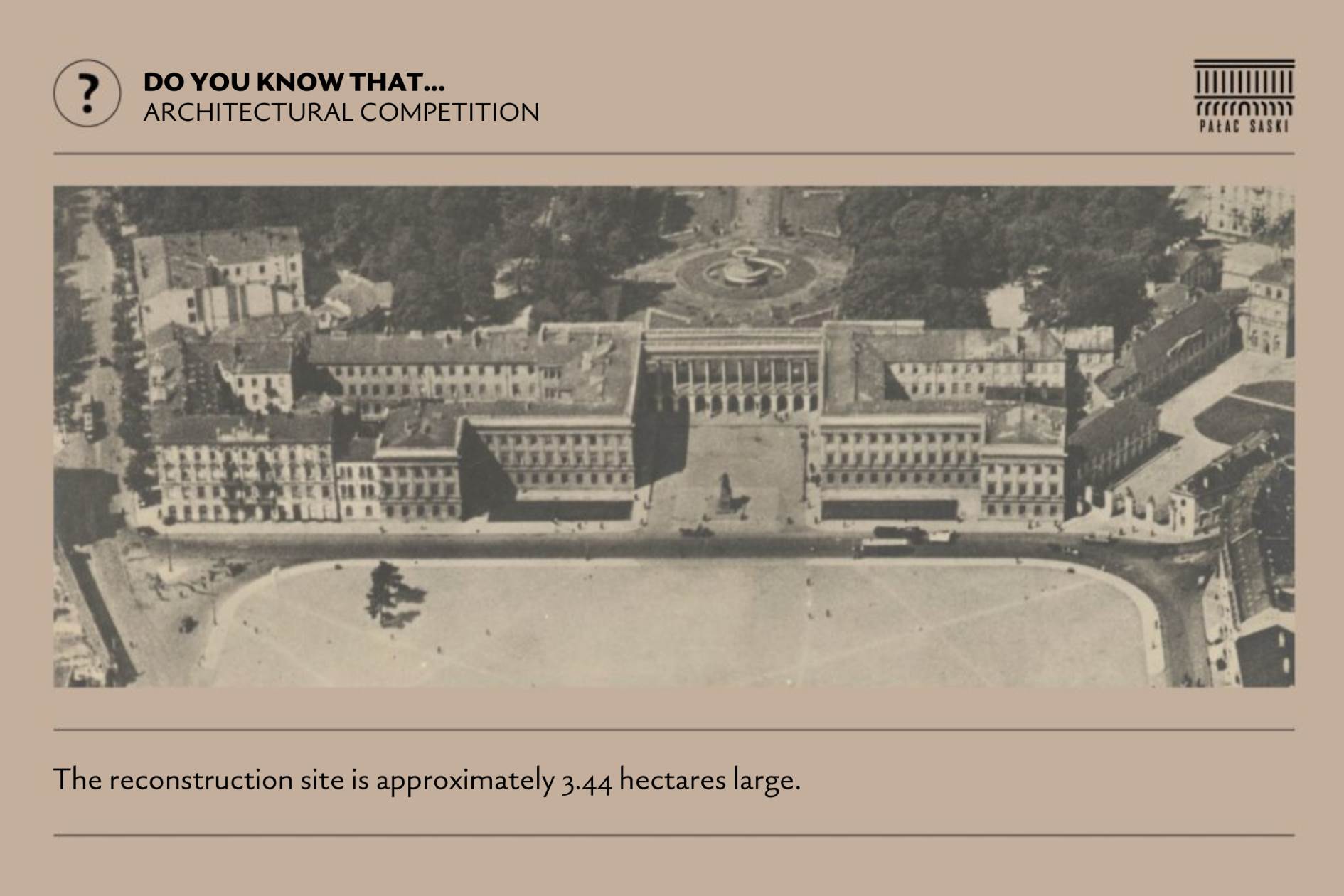
On 27 March 2023, an announcement was published in the Tenders Electronic Daily - the Supplement to the Official Journal of the EU about a competition for the development of an architectural and urban planning concept for a project involving the reconstruction of the Saski Palace, the Brühl Palace and three townhouses on Królewska Street no. 6, 8 and 10/12. Thus began the process of selecting the studio that will prepare the reconstruction project.
The international competition, which was operated by the Association of Polish Architects (SARP), consisted of two main stages preceded by a qualifying phase. Architectural companies that demonstrated relevant experience and technical ability were given access to extensive competition materials, including a GIS (geographic information system) spatial model, and submitted studies in the first stage. They were reviewed by a jury consisting of architects, conservation services, representatives of the art world and state and capital city authorities. In the second stage, five selected studios submitted their architectural concepts for the reconstruction of the complex of the western frontage of Piłsudski Square.
The results of the competition were announced on 12 October 2023: the first prize was won by the WXCA Group sp. z o.o. studio.
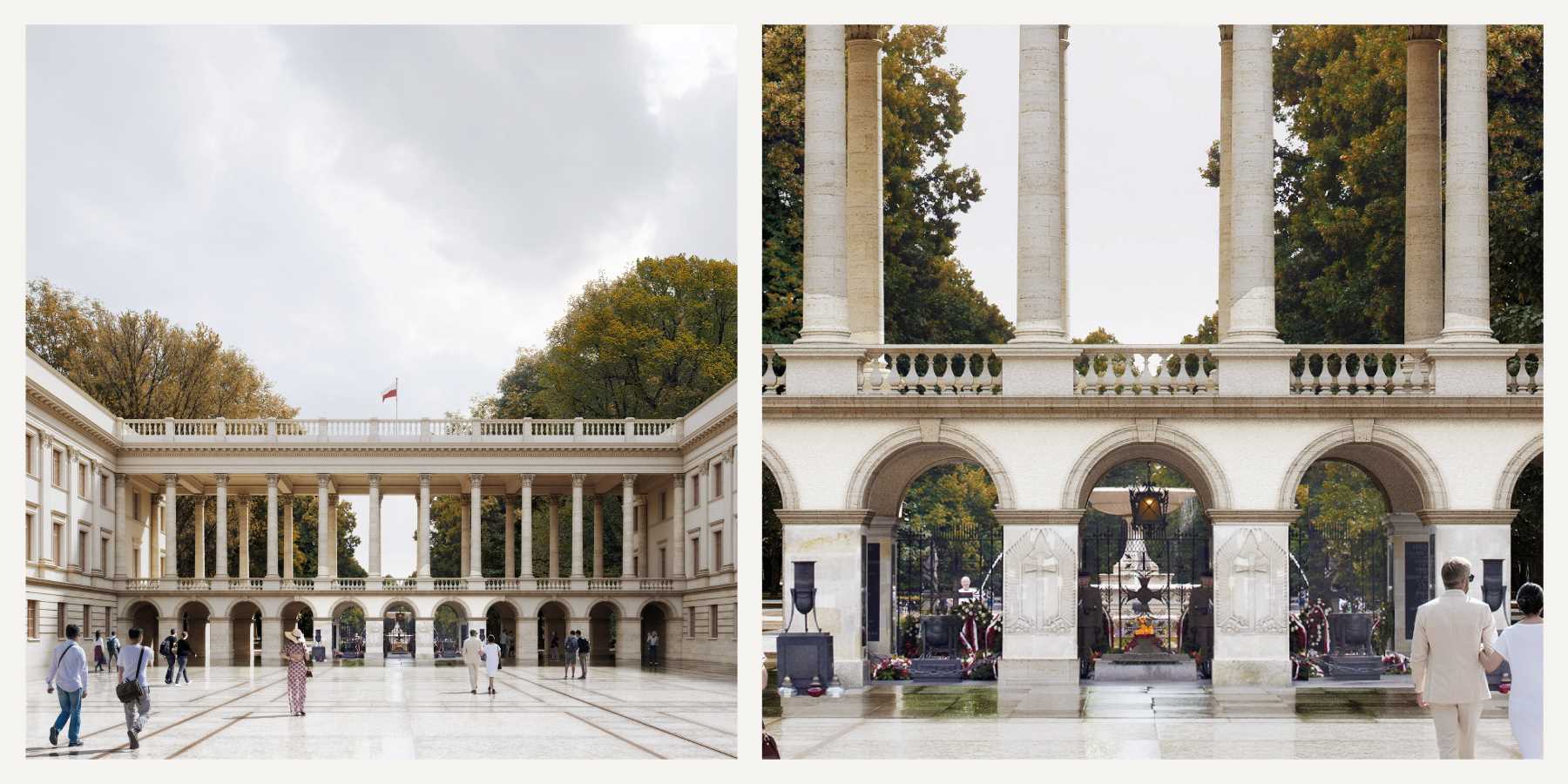
Archaeologists on the grounds of the Brühl Palace
The inter-war headquarters of the Ministry of Foreign Affairs, previously the Central Telegraph Office and, even earlier, the residence of the Saxon minister Heinrich Brühl and the Grand Crown Chancellor Jerzy Ossoliński. This is the order in which archaeologists are uncovering successive cultural layers as part of the archaeological research in the area of the former palace on Wierzbowa Street, which began in June. This work was preceded by an inspection of the site by a team of sappers.
Before the actual work began, the archaeologists had to solve the issue of six trees colliding with the research area. Thanks to an arborist and dendrological expert opinion prepared in cooperation with the Warsaw University of Life Sciences, it was possible to replant them. They are now growing next to the Warsaw Nike statue, where they will be under the care of the greenery protection team for the next three years. The archaeological research carried out in the approx. 4,500 m2 area of the palace’s outbuildings and courtyard yielded surprising discoveries right from the start. On 13 July 2023, the partially preserved sculpture with the inscription “Glory” on the pedestal was unearthed. Perhaps it would not have caused such a stir among researchers if it were not for the fact that a sister monument with an identical inscription is located about 200 metres away, proudly adorning the main avenue of the Saxon Garden for years. Further analysis will help determine whether the find is an original or one of the reconstructions.
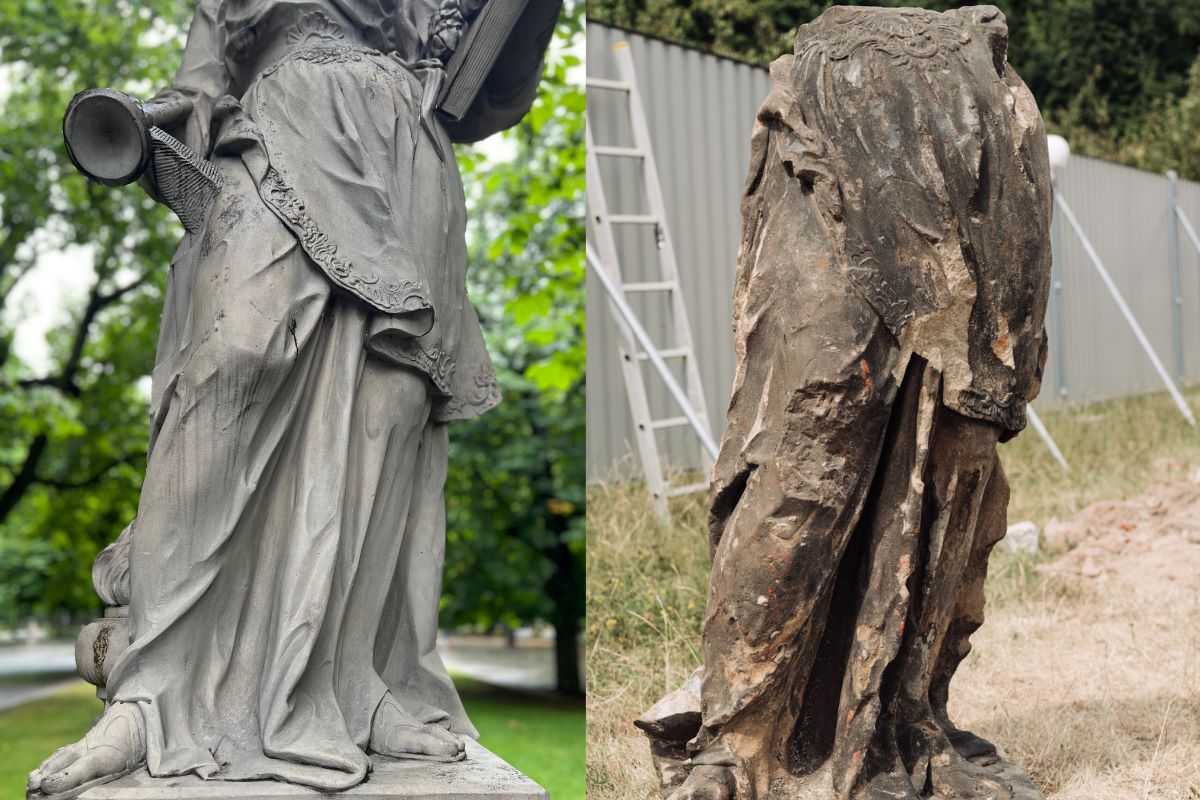
The first phase of work resulted in the discovery of nearly ten thousand artefacts which are now being meticulously catalogued and studied, including using 3D scanning technology. Some of them are objects of great architectural importance that will help recreate the decorations of the building’s facade. These include a fragment of the base of one of the columns, a partially preserved niche decorating an alcove or the facade cladding of a modernist pavilion. Numerous everyday objects from hundreds of years ago have also been excavated from beneath the ground. Most of these are fragments of pottery, plates, jugs or bottles, but also food remains such as oyster shells. Selected finds can be seen at the “Treasures of the Brühl Palace” exhibition at Piłsudski Square.
Geodetic monitoring of the Tomb of the Unknown Soldier is being carried out throughout the excavation works. The measure is aimed at ensuring special protection of the remains of old buildings through precise monitoring of their condition.
On the reconstruction of the Saski Palace in the scientific community
In the past year, the subject of the reconstruction of the Saski and Brühl Palaces featured prominently at four academic conferences. The interdisciplinary conference “Rebuilding What Was Lost. Current Challenges in Restoring and Reconstructing Architectural Heritage” was held at the premises of the co-organiser, the Academy of Fine Arts in Warsaw. As part of the event dedicated to restoring buildings of historical significance, one of the scientific panels focused on the restoration of the Saski and Brühl Palaces. The speakers addressed both the management of the investment process in the context of the reconstruction of a historical site, as well as issues related to the symbolism of the Tomb of the Unknown Soldier or community initiatives, using the activities of the Saski 2018 association as an example.
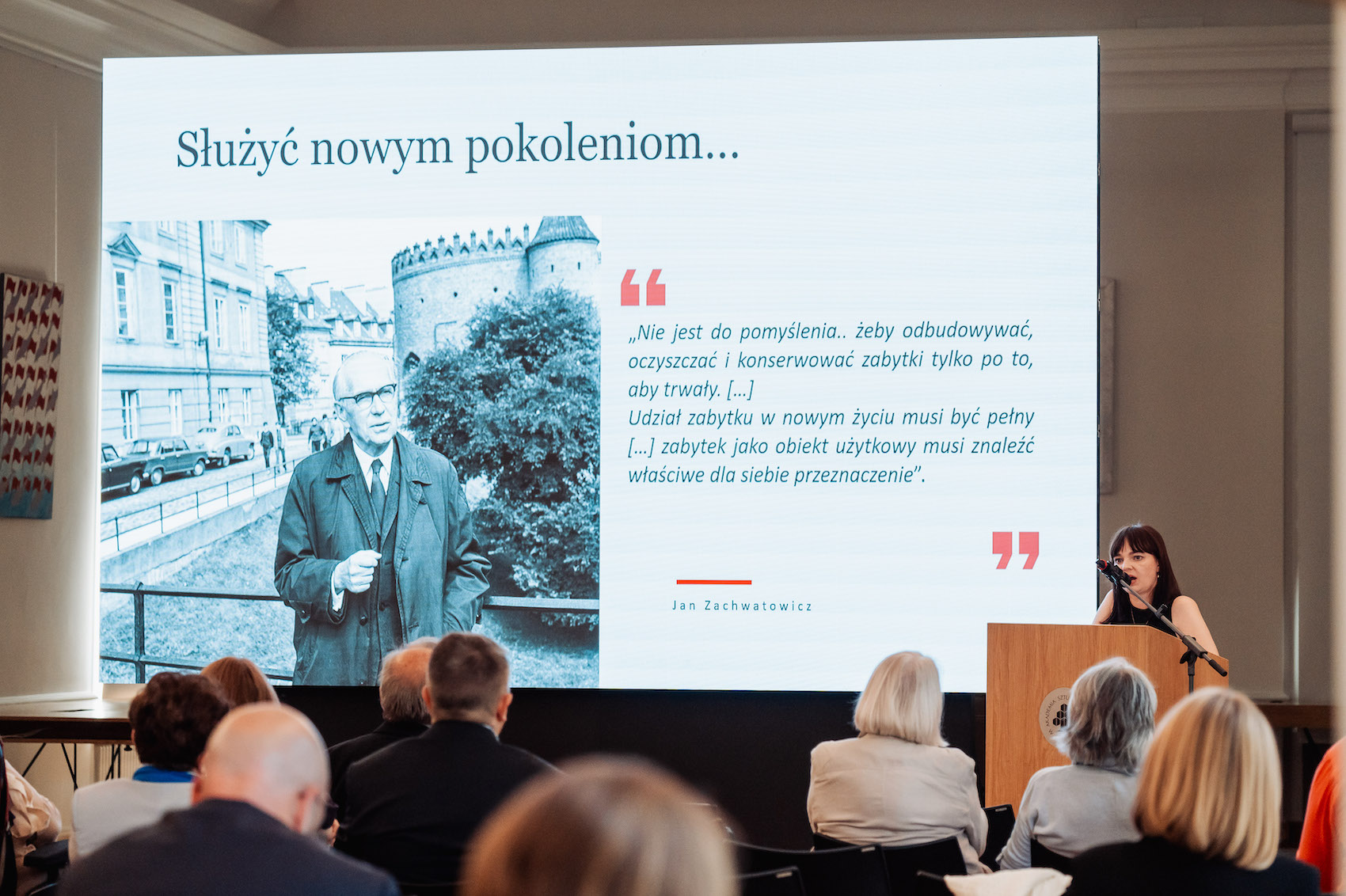
The topic of the Saski Palace also emerged during the conference “Between Orthodoxy and Creation”, the 15th Conservation and Architectural Conference. Subsequent editions of the event focus on the challenges of contemporary architecture, urban planning and historic preservation. The conference took place on 22-23 November 2023 at the headquarters of the Association of Polish Architects (SARP). During the panel on the reconstruction of the western frontage of Piłsudski Square, the role of archaeological research in the process of rebuilding the historic buildings was discussed, while representatives of the WXCA Group sp. z o.o. architectural studio presented and discussed their concept for the reconstruction of the complex of palaces and townhouses, which won the international competition.
The current activities of Pałac Saski sp. z o.o., with particular emphasis on the ongoing architectural and urban planning competition, were also presented at the conference “Architecture of Challenges - Rebuilding Ukraine”. A highlight of the “Echoes of Antiquity” conference was a guided tour by an international group of scholars around the uncovered relics of the Saski Palace. The international event was organised by the University of Warsaw, the Royal Łazienki Museum and Pałac Saski sp. z o.o.
The history of the Saski Palace for everyone
The reconstructed complex of the Saski and Brühl Palaces and three townhouses on Królewska Street in Warsaw is a place with an extremely rich and turbulent history, although often little known due to the decades of absence of the buildings on the map of the capital. To meet expectations, the Wydawnictwa Szkolne i Pedagogiczne publishing house, in cooperation with Pałac Saski sp. z o.o., prepared the educational brochure “The Saski Palace. An extraordinary place in an extraordinary city”. The publication briefly describes the history of the palace and its immediate surroundings in the context of Polish history. The brochure also contains a collection of historical maps and archive photographs. It also features photographs of artefacts found during archaeological work carried out on the site in 2006 and 2008. The materials include lesson plans with topics concerning e.g. the novella “Ogród Saski” [The Saxon Garden] by Bolesław Prus.
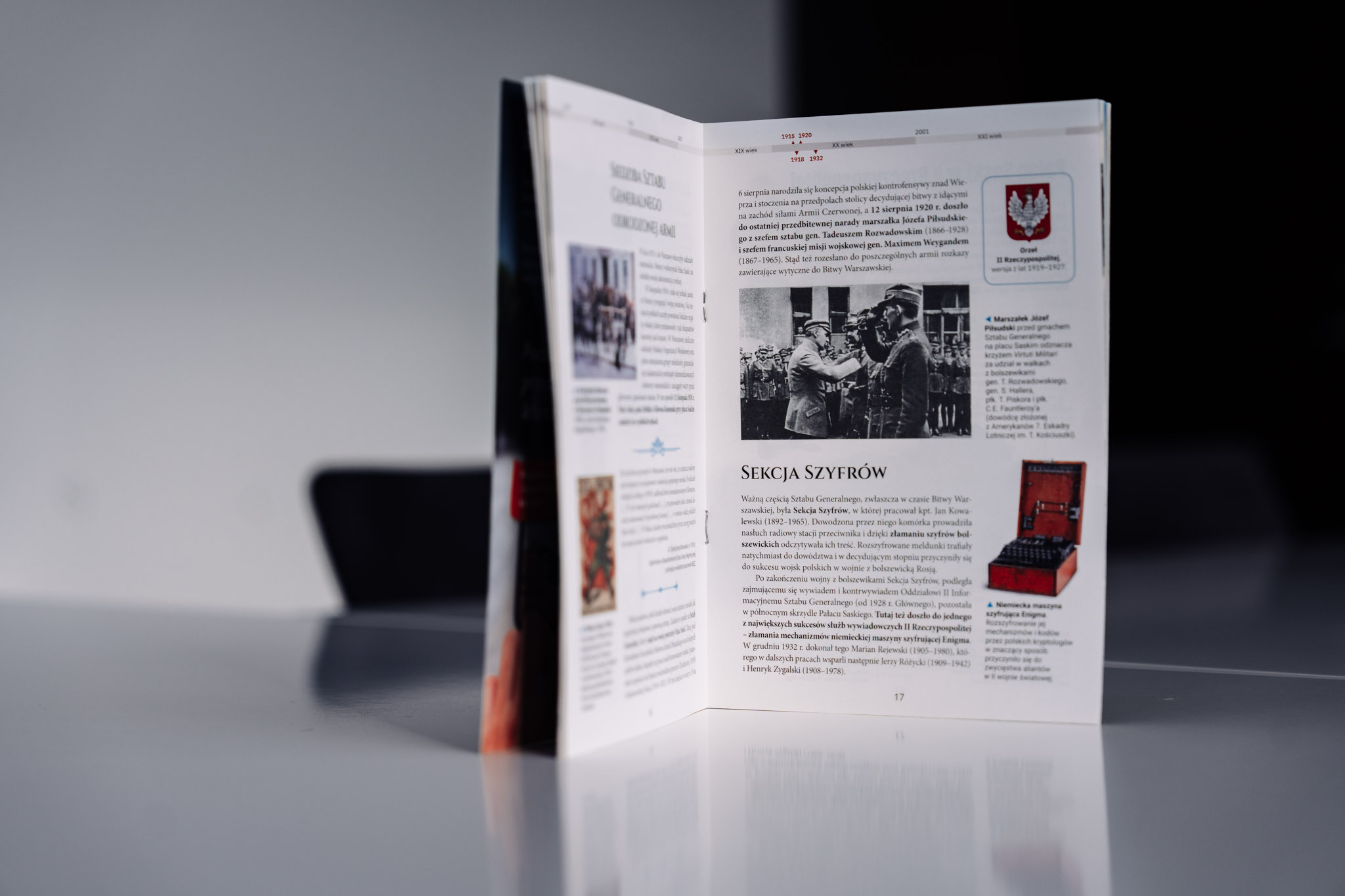
In addition to traditional educational material, we also present the history of the buildings on our YouTube channel. In a series of 12 short films entitled “Phenomenon”, experts discuss topics related to the almost 300-year-old history of the Saski and Brühl Palaces. Viewers will find out why both palaces were blown up by the Germans at the end of the war and why, despite numerous initiatives, they have still not been rebuilt. The protagonists of subsequent episodes also go back to the early days of the palaces. We learn, for example, the secrets of the 18th-century menu of the palace’s inhabitants or the hidden meanings of the Brühl Palace sculptures.
Visiting the cellars of the Saski Palace
During the summer and autumn of last year, Varsovians and visitors to the capital had the opportunity to enjoy a new tourist attraction. Anyone interested in the history of the Saski Palace and its surroundings, but also those who wanted to see the exposed remains of the palace’s foundations up close, could sign up for a free tour. During the guided tours on the educational path “Around the cellars of the Saski Palace”, licensed Warsaw guides cited selected interesting facts from the history of the Saski Palace, showing visitors specific places in the space of the remaining fragments of the walls. In addition to the educators provided by Pałac Saski sp. z o.o., other guides who had previously completed the training could also guide their tourist groups free of charge. More than seven thousand people visited the historic walls of the palace in more than three months.
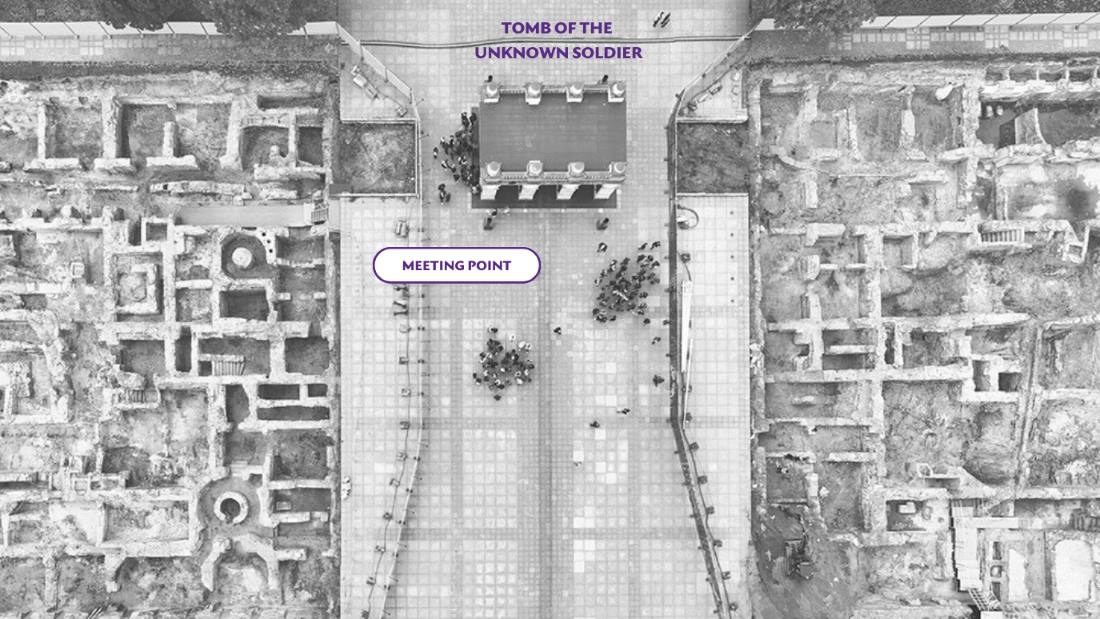
History and concepts of the reconstruction of the palaces at the exhibitions
Educational activities concerning both the history and the ongoing investment in the reconstruction of the Saski Palace are often based on cooperation with cultural institutions. An example of such joint activities is the exhibition “Jerzy Ossoliński - magnate of Sandomierz”, prepared by the Castle Museum in Sandomierz. One part of the exhibition was devoted to the history of the Brühl Palace from its foundation in the 17th century by Jerzy Ossoliński to its destruction in 1944. The history of the Brühl Palace was also part of another exhibition that last year was shown in several Polish cities. “Restoring the Heart of the Independent Poland” is an open-air exhibition telling the story of a place that was important for the Polish Republic, which was reborn after 1918 - Saxon Square, later Piłsudski Square, where the General Staff of the Polish Army (Saski Palace) and the Ministry of Foreign Affairs (Brühl Palace) were located. The exhibition has so far been presented in Kalisz, Gdańsk, Radom and Rawicz.
Two other exhibitions organised last year were presented on the fencing of the reconstruction investment area. On 24 June last year, the previous exhibition “Fragments of the Past”, featuring finds from archaeological work carried out in 2006 and 2008, was replaced by the exhibition “HOME”, featuring 120 posters by 116 artists from 27 countries. It was presented as part of the 28th International Poster Biennale in Warsaw, organised by the Academy of Fine Arts.
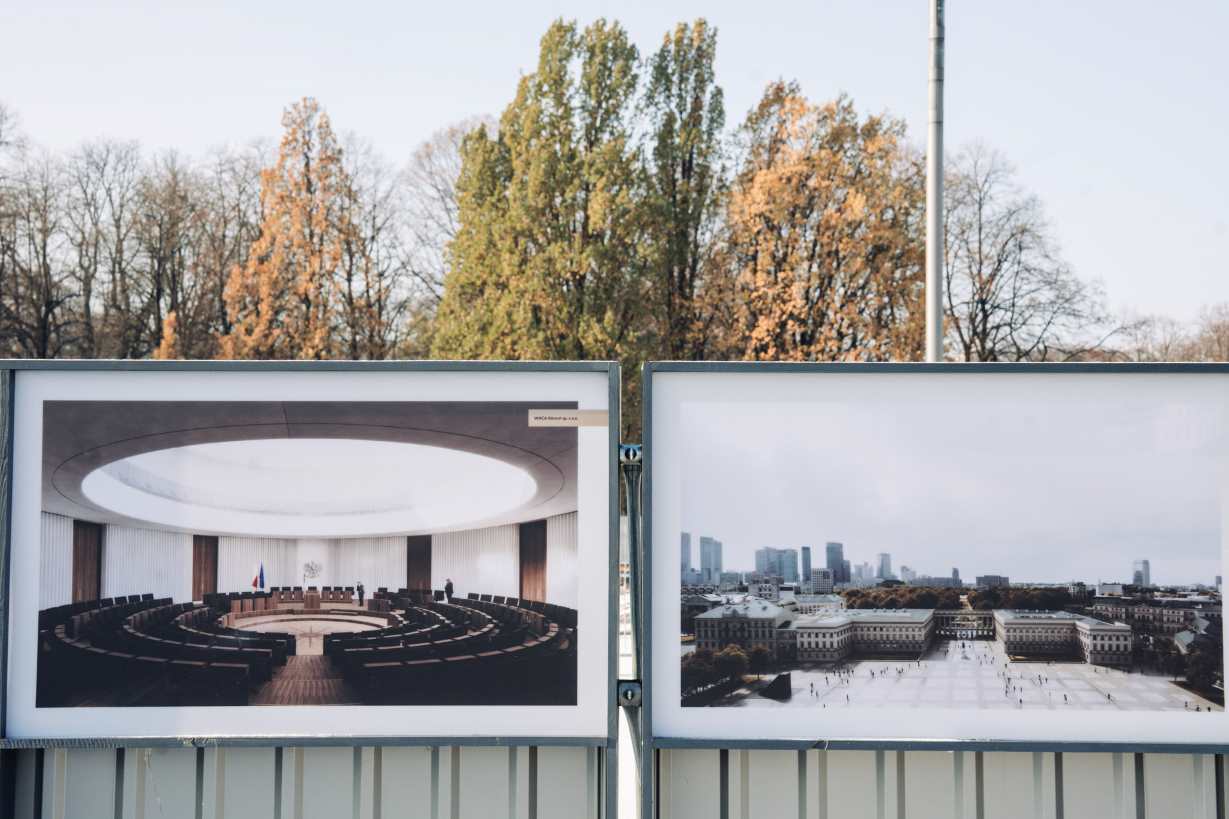
In November, the works of poster artists were replaced by designs and visualisations prepared by architects. The new exhibition “Concepts for the reconstruction of the Saski Palace” presents the work of all five studios that competed in the final stage of the international architectural competition. Thanks to prints on large-format boards, a trained eye will notice even the smallest details that architects included in their concepts.
Cultural events
The history of the Saski Palace is also popularised during various cultural events. Their participants actively spend their leisure time and can additionally feel the spirit of years gone by. An example of such an event is the Saxon Garden Festival. The second edition was held on 27 May last year, exactly on the 296th anniversary of the opening of the Saxon Garden to the public. The nearly 40,000 people who, according to estimates of the capital’s police force, honoured the Saxon Garden with their presence, had a chance to feel the atmosphere of the old times. Visitors could visit, among other things, arranged shops or see costumes from the inter-war period. In the evening, on the other hand, you could let yourself be carried away by old rhythms performed by Janusz Prusinowski and his Company and the Warsaw Sentimental Orchestra (Warszawska Orkiestra Sentymentalna).
Those who couldn’t get enough of dancing to inter-war songs could once again meet the Warsaw Sentimental Orchestra and the Mała Orkiestra Dancingowa (Small Dance Orchestra) on the last Saturday in August during the dance “In the Saxon Garden by the Fountain”. During the summer, the youngest could also take part in workshops related to the Palace and Saxon Garden during the city’s neighbourhood picnics. The theme of the Saski Palace and its two most famous residents also emerged during the Festiwal Niepodległa na Krakowskim Przedmieściu (Independent Poland Festival in Krakowskie Przedmieście), a joyous celebration of Independence Day.
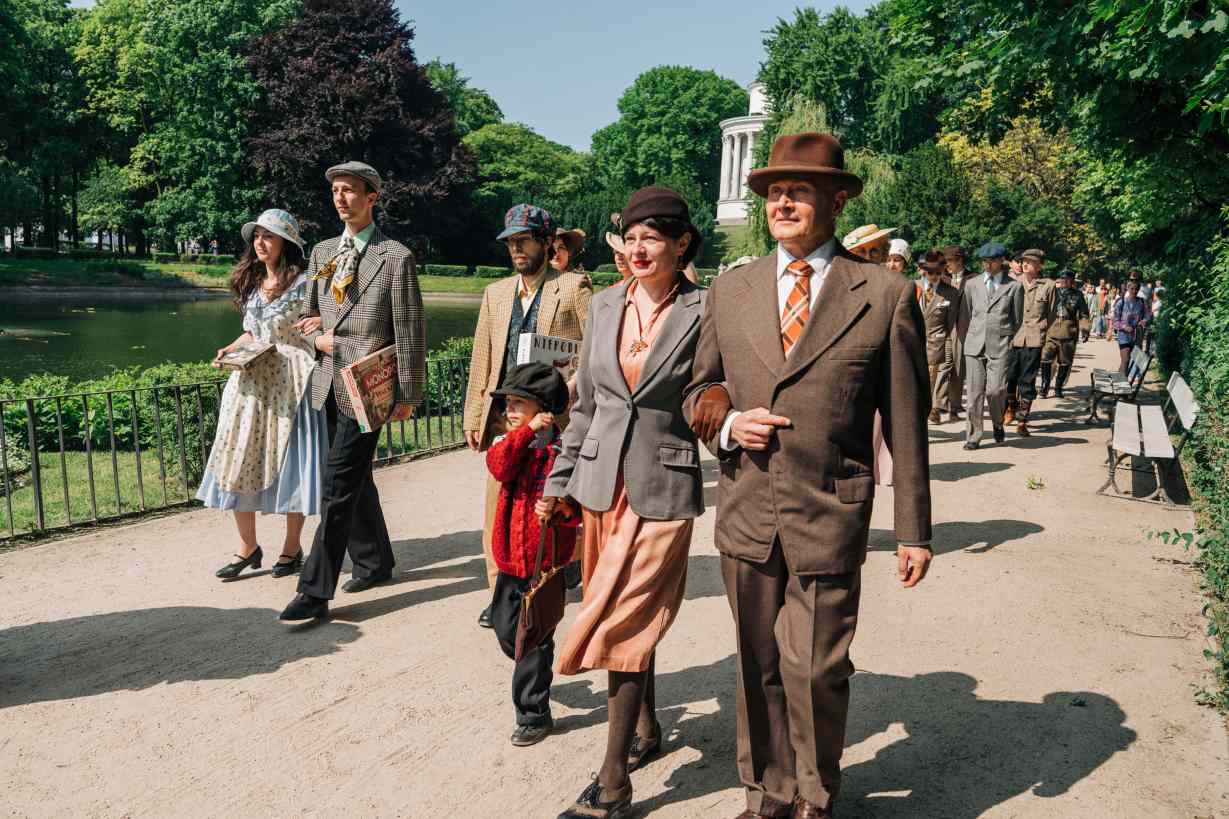
What is next for the reconstruction of the Saski Palace?
In 2024 the project to rebuild the western frontage of Piłsudski Square is not slowing down. At the beginning of the year, the remains of the Saski Palace foundations, which are listed in the register of historical monuments, will gain a roofing. The plan is also to continue the archaeological work on the Brühl Palace site and to start it in the area of the townhouses on Królewska Street.
The sculpture reconstruction programme will also be continued, carried out in cooperation with state art universities. So far, the surviving sculptural elements of the Brühl Palace facade that survived the war have been analysed. The objects are in the collections of the Museum of the Earth of the State Academy of Sciences, the Museum of Warsaw and the Faculty of Architecture at the Warsaw University of Technology.
Also, in 2024, the team of the architectural studio selected in the competition conducted by the Company will work on the final architectural design of the reconstructed buildings at Piłsudski Square.

We also continue to maintain the “Fototeka” of the Saski Palace. The campaign aims to collect old photographs of the Saski Palace, Brühl Palace and the townhouses on Królewska Street and their immediate surroundings which may still be in private collections. If you have photographs taken before 1945 in the area of today’s Piłsudski Square, you are welcome to submit them using the form: palacsaski.pl/fototeka.